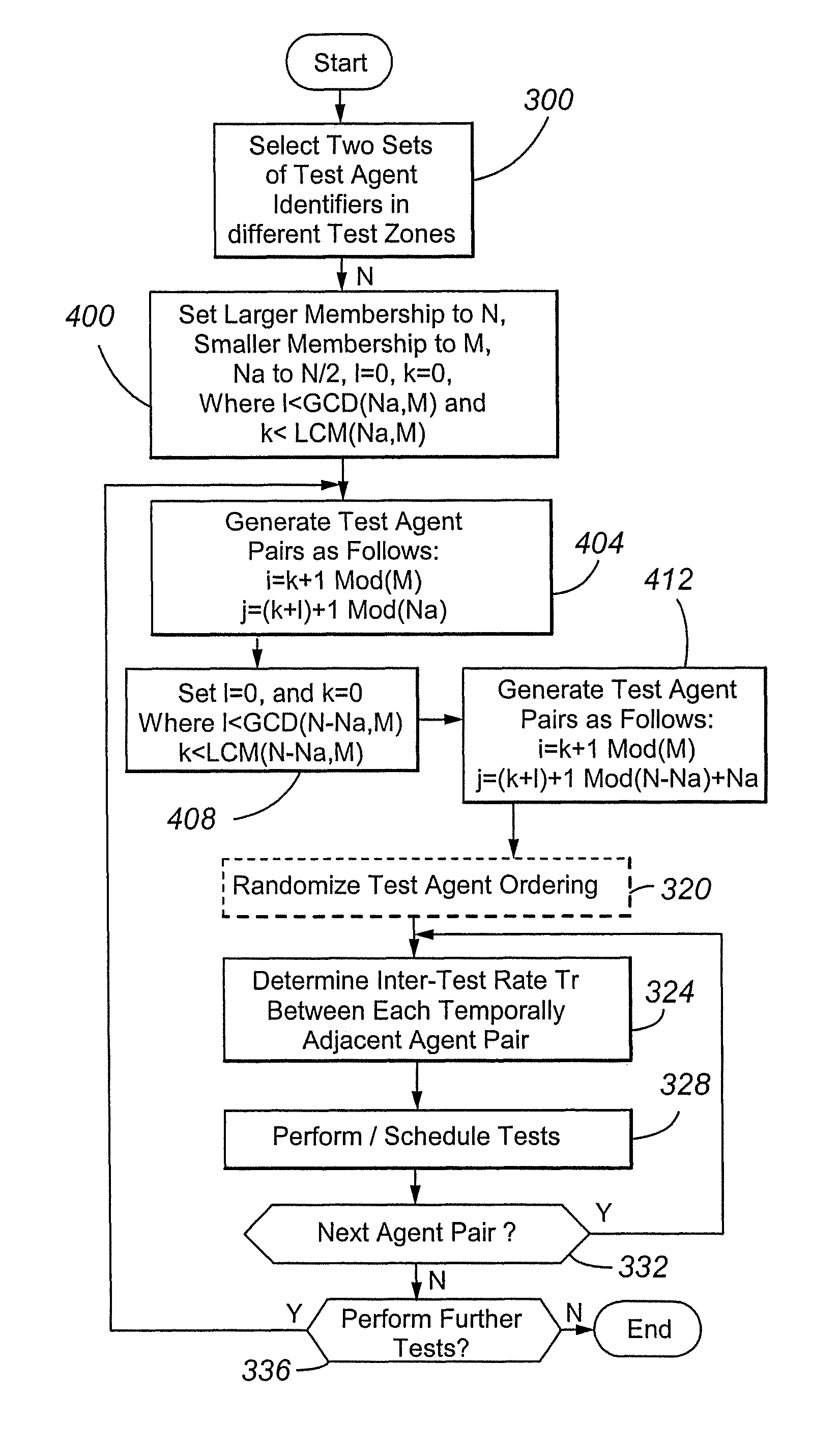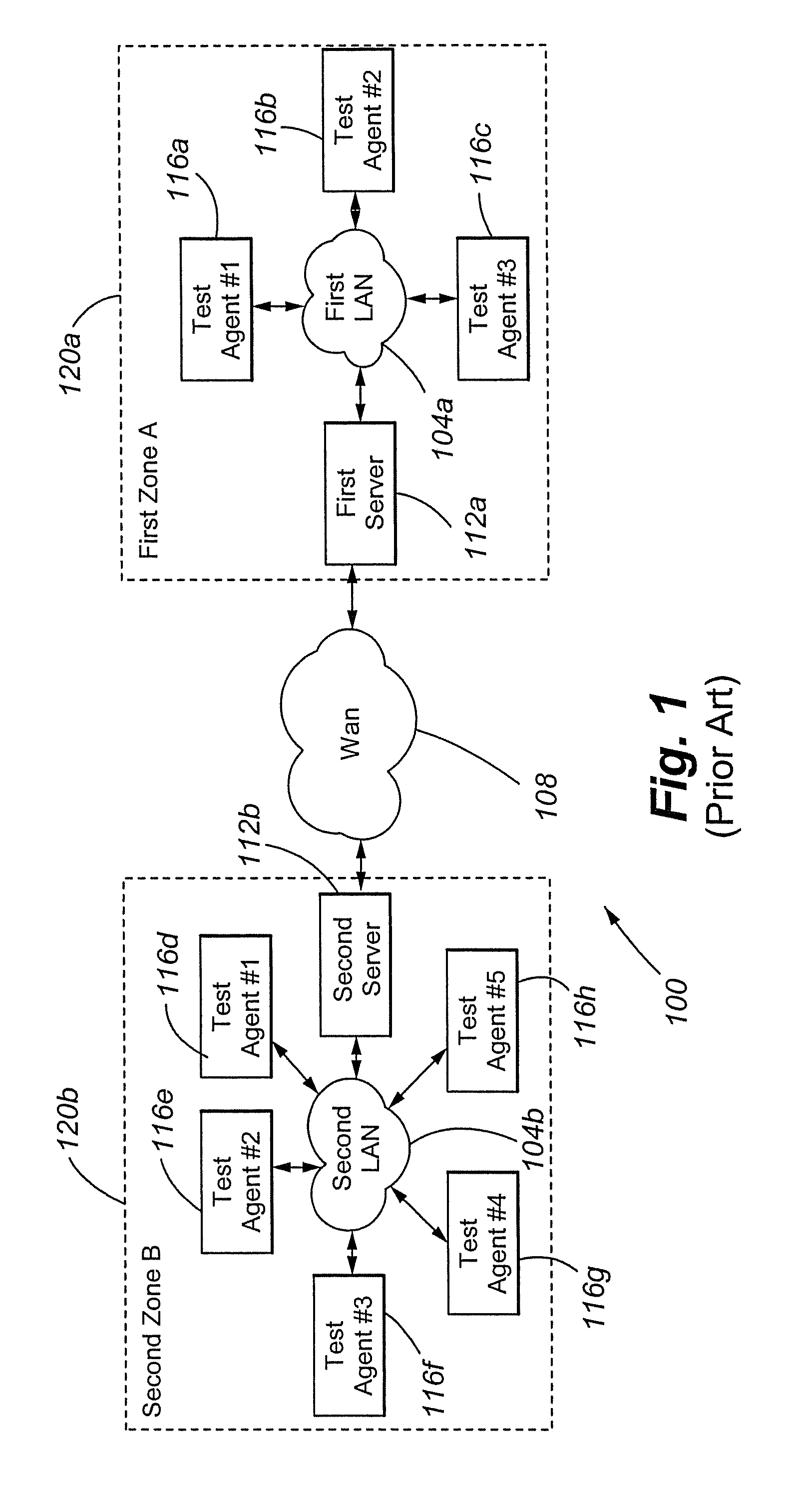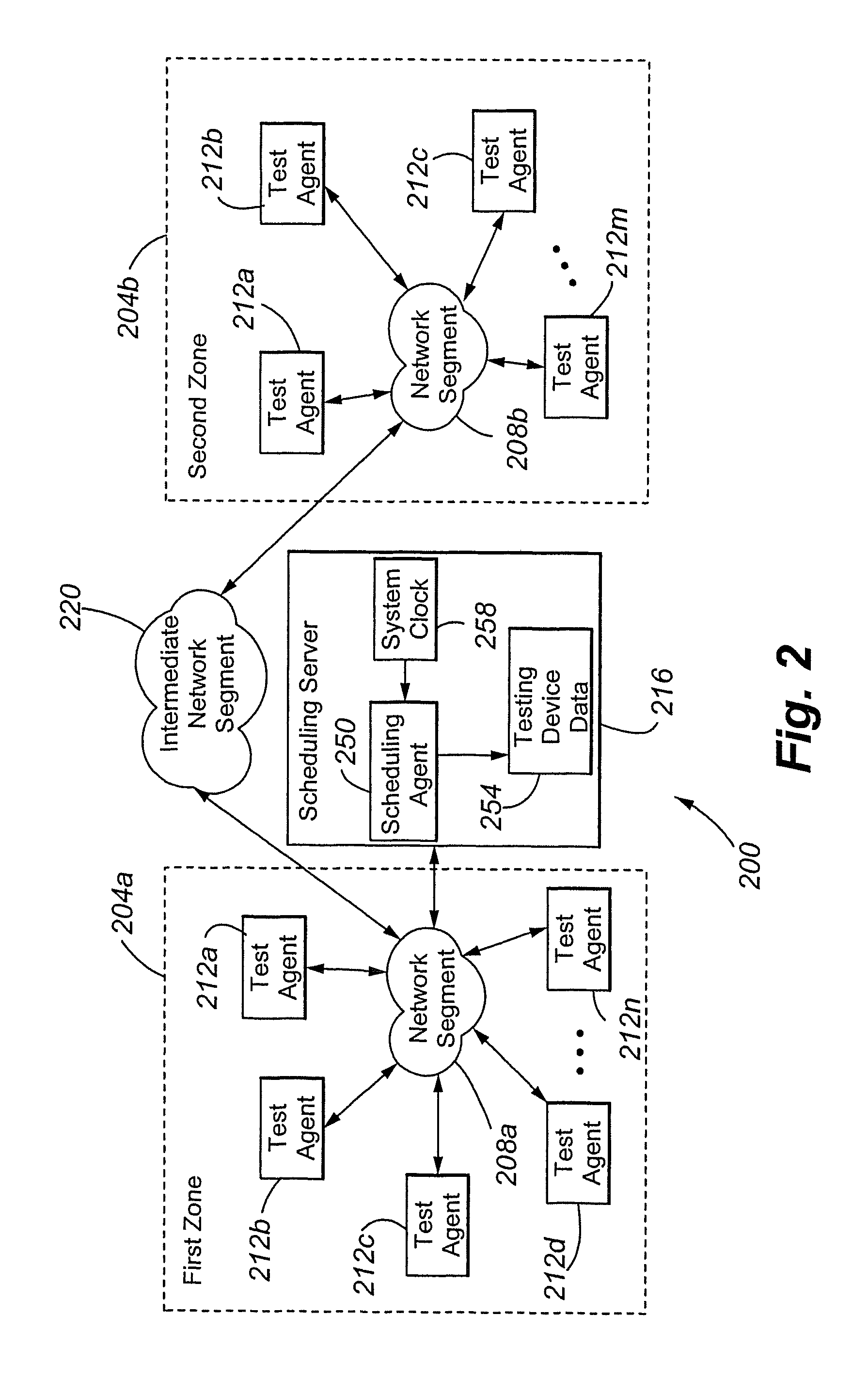Hierarchical fair scheduling algorithm in a distributed measurement system
a distributed measurement system and scheduling algorithm technology, applied in the field of scheduling algorithms, can solve the problems of inability to meet the needs of users, so as to achieve the effect of fair coverage of the object groupings
- Summary
- Abstract
- Description
- Claims
- Application Information
AI Technical Summary
Benefits of technology
Problems solved by technology
Method used
Image
Examples
second embodiment
[0048]In a second embodiment, a scheduling algorithm is provided that divides a test agent membership that is not coprime into two subsets, each having coprime memberships. Assume scheduling is to be performed between members of a first set S1 comprising N test agents and a second set S2 comprising M agents, wherein N is preferably larger than M. The system clock 258 is characterized by a click T. This embodiment will now be discussed with reference to FIG. 3.
[0049]In step 300, the scheduling agent 250 selects two sets of test agent identifiers in different test zones.
[0050]In optional decision diamond 304, the agent 250 determines whether the memberships of the selected sets are coprime. If so, the agent 250 proceeds to optional step 340 and generates the sequences using the scheduling algorithm of the prior embodiment. If not, find the number Na<N that is closest to N / 2, such that Na and N−Na are each coprime with M.
[0051]In step 312, if there is no Na satisfying the above relatio...
third embodiment
[0080]In a third embodiment, the sequences of test agent pairs are generated using a different scheduling algorithm. For test agent sets S1 and S2 of cardinalities N and M, respectively, the algorithm is as follows:
[0081](1) randomly assign numbers 1 to N and numbers 1 to M to all test agents in groups S1 and S2, respectively; and
[0082](2) generate all different N*M (i,j) pairs where the first element pertains to a
set of size N and the second element to another set of size M. This is achieved with the following algorithm:
[0083]for (l=0; l
[0084]for (k=0; k
i=k+1 mod(M)
j=(k+l)+1 mod(N)
In the above equation, GCD is the largest whole number that is smaller than or equal to N and M and divides N and M by an integer multiple (or whole number), LCM is the smallest whole number that is larger than or equal to N and M and both N and M multiply into by a whole number.
[0085]The scheduling algorithm in the second step normally generates all test agent pairs, and, in...
fourth embodiment
[0163]In the present invention, a modified version of the scheduling algorithm is used. The algorithm by itself may have many sources of randomization, so it could actually be used to avoid the randomization of step 320. The pseudo-code for the modified version is as follows:
[0164]count=0; i=0; j=0;
[0165]for (l=0; I
[0166]for (k=0; k
[0167]schedule test between i+1 and j+1;
[0168]i=Pk+F (mod(N));
[0169]j=Qk+l+G (mod(M));
[0170]count++;
}
In the above algorithm, “P”, “F”, “Q”, and “G” are integers.
[0171]The modified version will still generate all different (i,j) pairs as long as P and Q are relatively prime to M and N respectively, and F and G are any number in the [0,N) and [0,M) ranges respectively (well known number theory result).
[0172]Therefore, each different combination of P,Q, F and G values will lead to a different pair ordering. We can compute the amount of different combinations:
[0173]P can take at least ˜(N / In N) values, i.e., the number of prime...
PUM
 Login to View More
Login to View More Abstract
Description
Claims
Application Information
 Login to View More
Login to View More - R&D
- Intellectual Property
- Life Sciences
- Materials
- Tech Scout
- Unparalleled Data Quality
- Higher Quality Content
- 60% Fewer Hallucinations
Browse by: Latest US Patents, China's latest patents, Technical Efficacy Thesaurus, Application Domain, Technology Topic, Popular Technical Reports.
© 2025 PatSnap. All rights reserved.Legal|Privacy policy|Modern Slavery Act Transparency Statement|Sitemap|About US| Contact US: help@patsnap.com



